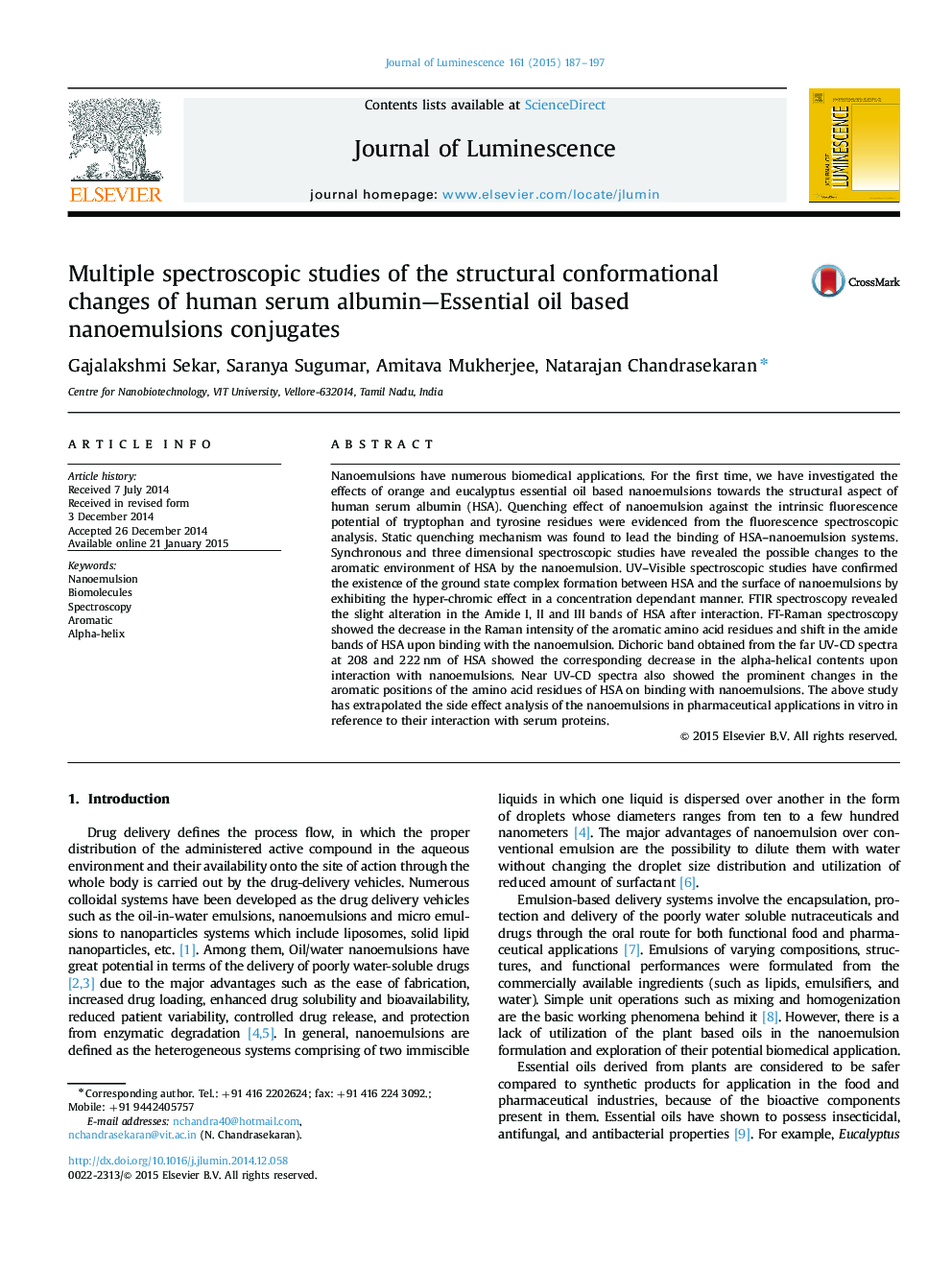| Article ID | Journal | Published Year | Pages | File Type |
|---|---|---|---|---|
| 5398944 | Journal of Luminescence | 2015 | 11 Pages |
Abstract
Nanoemulsions have numerous biomedical applications. For the first time, we have investigated the effects of orange and eucalyptus essential oil based nanoemulsions towards the structural aspect of human serum albumin (HSA). Quenching effect of nanoemulsion against the intrinsic fluorescence potential of tryptophan and tyrosine residues were evidenced from the fluorescence spectroscopic analysis. Static quenching mechanism was found to lead the binding of HSA-nanoemulsion systems. Synchronous and three dimensional spectroscopic studies have revealed the possible changes to the aromatic environment of HSA by the nanoemulsion. UV-Visible spectroscopic studies have confirmed the existence of the ground state complex formation between HSA and the surface of nanoemulsions by exhibiting the hyper-chromic effect in a concentration dependant manner. FTIR spectroscopy revealed the slight alteration in the Amide I, II and III bands of HSA after interaction. FT-Raman spectroscopy showed the decrease in the Raman intensity of the aromatic amino acid residues and shift in the amide bands of HSA upon binding with the nanoemulsion. Dichoric band obtained from the far UV-CD spectra at 208 and 222Â nm of HSA showed the corresponding decrease in the alpha-helical contents upon interaction with nanoemulsions. Near UV-CD spectra also showed the prominent changes in the aromatic positions of the amino acid residues of HSA on binding with nanoemulsions. The above study has extrapolated the side effect analysis of the nanoemulsions in pharmaceutical applications in vitro in reference to their interaction with serum proteins.
Related Topics
Physical Sciences and Engineering
Chemistry
Physical and Theoretical Chemistry
Authors
Gajalakshmi Sekar, Saranya Sugumar, Amitava Mukherjee, Natarajan Chandrasekaran,
